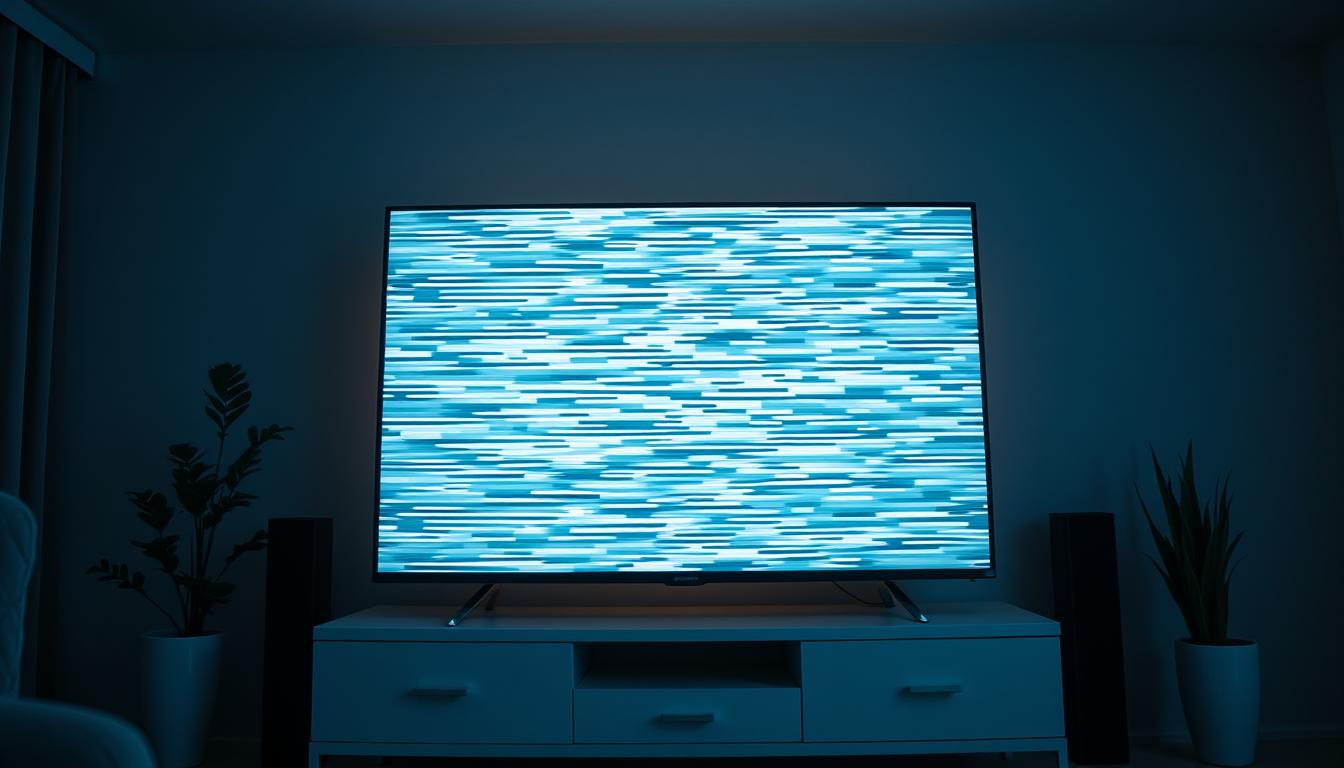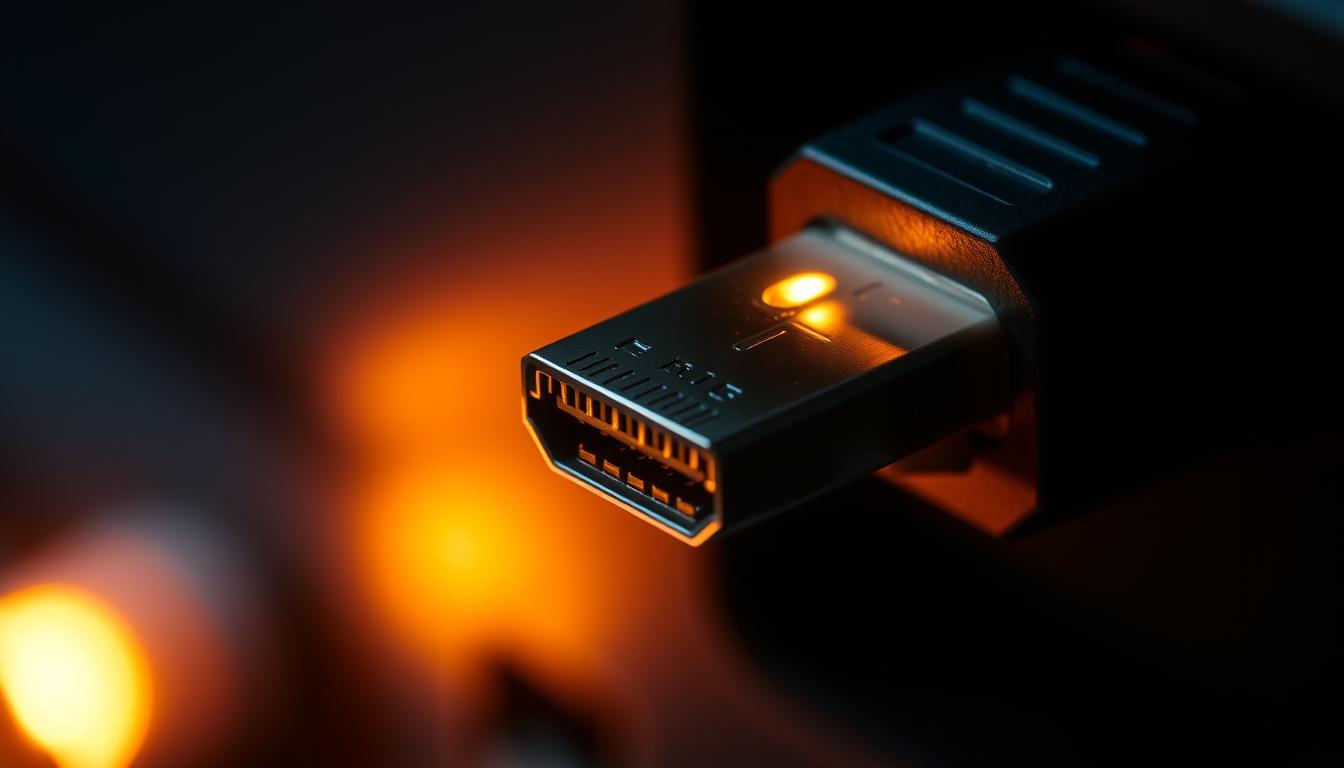Screen disruptions during input switching aren’t just annoying—they’re a widespread technical challenge. Many viewers assume their devices are failing when sudden flickering occurs, but nearly half of these cases trace back to preventable connection issues. Before exploring solutions, verify your media isn’t inherently flawed and confirm devices aren’t overheating—a common culprit behind erratic behavior.
This guide focuses on resolving visual interruptions that occur exclusively when toggling between connected devices. You’ll learn to differentiate these specific problems from general display glitches. For instance, flickering that starts only after selecting a gaming console or streaming box signals distinct troubleshooting needs.
Practical strategies range from simple cable inspections to optimizing display settings for multi-device setups. You’ll discover why standard troubleshooting often falls short for source-switching scenarios and how tailored fixes restore seamless viewing. Addressing these challenges systematically prevents unnecessary hardware replacements and frustration.
Key Takeaways
- Nearly half of screen disruptions originate from connection issues during device switching
- Overheating electronics often contribute to unstable HDMI performance
- Source-specific flickering requires different solutions than general display problems
- Basic cable checks often resolve immediate visual interruptions
- Advanced configuration adjustments prevent recurring issues
Introduction to HDMI Flickering Issues
Visual interruptions during media playback often stem from signal conflicts between components. Unlike general display glitches, HDMI-specific disruptions frequently appear as split-second blackouts or scrambled images when activating new sources. These transient errors typically indicate communication breakdowns rather than permanent hardware damage.

Recognizing Signal Transition Problems
Three key signs help identify HDMI-related screen flickering. Brief signal dropouts lasting 1-2 seconds top the list, followed by horizontal lines slicing through moving video. Some users report complete signal loss requiring cable reseating. These symptoms intensify when cycling through multiple devices like gaming consoles and streaming boxes.
Impact on Multimedia Consumption
Modern 4K monitors demand precise synchronization between source devices and displays. Mismatched refresh rates between a 120Hz gaming PC and 60Hz streaming device create instability. High dynamic range (HDR) content compounds these challenges, requiring extra bandwidth that older cables might not support.
| Symptom | HDMI Issue | Other Display Problems |
|---|---|---|
| Black screens | During source switch | Persistent |
| Horizontal lines | Appear temporarily | Static patterns |
| Signal loss | Resolves spontaneously | Requires reboot |
Unresolved flickering can degrade equipment performance over time. Each failed connection attempt strains port components and stresses internal circuitry. Quick resolution preserves your viewing experience and prevents costly hardware replacements.
Common Causes of HDMI Flickering
Persistent visual disruptions often stem from hardware limitations or environmental factors. While modern devices handle high-resolution content efficiently, specific technical mismatches create instability during signal transfers.

Loose Connections and Faulty Cables
Wobbly connectors rank among the top reasons for unstable signals. Even minor gaps between the HDMI cable and port disrupt high-frequency data flow. Over time, repeated plugging wears down connectors, reducing contact precision.
Aging cables develop internal fractures invisible to the eye. These micro-breaks force displays to reinterpret partial data packets, creating flicker patterns. Older HDMI 1.4 models struggle with 4K content at 144Hz – their bandwidth caps at 30Hz for ultra HD resolutions. This mismatch explains why 4K content display issues often trace back to outdated cables.
Mismatched Refresh Rates and Interference
Devices arguing over timing create visible chaos. A 120Hz gaming console fighting a 60Hz TV’s preferences produces constant renegotiations. These appear as rapid flickers during source switches or playback.
Electromagnetic interference from nearby routers or appliances introduces digital noise. Fluorescent lights and microwaves emit waves that distort HDMI signals. Shielded cables help, but relocating devices often proves more effective.
Power fluctuations compound these problems. Surges through shared outlets inject noise into connected components. Using dedicated circuits for media setups minimizes this risk.
Ensuring Secure Connections and Proper Cable Setup
Reliable media setups demand stable physical connections as their foundation. A 2023 Consumer Technology Association study found 63% of intermittent display issues resolve after addressing cable-related problems. This section focuses on practical verification methods and upgrade strategies.

Connection Verification Protocol
Start by inspecting both ends of your HDMI cable. Worn connectors often show discoloration or bent pins. Apply gentle side-to-side pressure while watching the screen – temporary stabilization indicates a loose contact point.
Follow this sequence for optimal results:
- Power off all connected devices
- Disconnect/reconnect cables at both ends
- Wait 30 seconds before powering on
Cable Upgrade Essentials
Older HDMI 1.4 models struggle with modern bandwidth demands. As one AV technician notes: “Using 1.4 cables for 4K/144Hz content is like fueling a sports car with lawnmower gas.”
| Cable Version | Max Resolution | Refresh Rate | Recommended Use |
|---|---|---|---|
| HDMI 1.4 | 4K | 30Hz | Basic streaming |
| HDMI 2.0 | 4K | 60Hz | Gaming consoles |
| HDMI 2.1 | 8K | 144Hz | High-end PCs |
Premium options like Snowkids HDMI 2.1 provide 48Gbps bandwidth – triple older versions. Always test new cables immediately after installation. Look for certifications like “Ultra High Speed” to guarantee performance.
Troubleshooting Display and Refresh Rate Settings
Signal timing conflicts often hide in plain sight during device transitions. Mismatched refresh rates between your computer and monitor create handshake errors that appear as flickering. These timing mismatches become pronounced when switching sources, as devices renegotiate display parameters.

Windows Display Configuration
Access your advanced display settings through these steps:
- Press the Windows key + I to open Settings
- Navigate to System > Display > Advanced display
- Select your external display from the dropdown
- Test each available refresh rate starting from the highest
Many users find success by matching their GPU’s output to their monitor’s native refresh rate. If 144Hz causes instability, try 120Hz or 60Hz increments.
macOS Display Optimization
Apple’s system preferences require different adjustments:
- Click the Apple logo > System Preferences > Displays
- Hold Option while clicking “Scaled” to reveal hidden options
- Choose your external display in the sidebar
- Lower the refresh rate gradually until flickering stops
Pro users recommend creating custom resolutions through third-party tools like SwitchResX for precise control. Document successful configurations for different devices to streamline future setups.
Persistent issues may indicate incompatible hardware. Check your monitor’s manual for supported refresh rates and compare them to your computer’s output capabilities. This alignment prevents signal renegotiation errors during source changes.
Updating and Reinstalling Drivers for Optimal Performance
Outdated software components frequently disrupt communication between your devices and display. Driver updates maintain compatibility with evolving HDMI standards, especially when managing multiple sources. This process differs between operating systems but follows a common goal: restoring stable signal transmission.
Windows Driver Management
Access the Device Manager by right-clicking the Start menu. Expand the “Monitors” section and right-click your display. Choose “Update driver” to search automatically. If flickering persists:
- Select “Uninstall device”
- Restart your computer
- Let Windows reinstall default drivers
Create a system restore point before major changes. Corrupted drivers often cause timing mismatches between your refresh rate and display capabilities.
macOS Software Adjustments
Apple handles display drivers through system updates. Navigate to System Preferences > Software Update to install available upgrades. For persistent issues:
- Check for macOS version compatibility
- Reset NVRAM by restarting with Command+Option+P+R
- Test with different HDMI ports
Recent macOS updates sometimes conflict with third-party hardware. If you experience issues after an upgrade, review common Apple TV issues for related solutions.
Exploring Alternative Ports and Adapter Solutions
Alternative connection strategies often resolve persistent HDMI challenges. When standard ports fail, your display’s secondary inputs become valuable troubleshooting tools. Many modern monitors and TVs include backup options that bypass problematic HDMI channels.
Utilizing Other Ports on Your TV or Monitor
Composite or component ports provide reliable fallbacks for older devices. While these connections don’t support 4K resolution, they maintain stable signals during source transitions. Test each available port systematically—some displays prioritize specific inputs during auto-detection.
For newer equipment, consider using DisplayPort or USB-C alternatives. These interfaces often handle higher refresh rates than basic HDMI ports. Check your device manual for supported formats before switching connections.
Selecting the Best HDMI Adapter or Alternative Connection
Quality adapters bridge compatibility gaps between devices. Look for models supporting your monitor’s maximum resolution and refresh rate. Cable Matters 4K HDMI adapters consistently handle bandwidth-intensive content without signal degradation.
When HDMI cables underperform, try these steps:
- Verify adapter firmware updates
- Match connector types across devices
- Use shorter cables for reduced interference
For multi-device setups, HDMI switchers with built-in signal boosters often provide cleaner transitions. Prioritize solutions offering automatic source recognition to minimize manual adjustments during input changes.
FAQ
Why does my screen flicker when switching HDMI sources?
Flickering often occurs due to loose connections, outdated cables, or mismatched refresh rates. Ensure your HDMI cable is securely plugged in and supports the resolution or refresh rate your device requires. Electromagnetic interference from nearby electronics can also disrupt signals.
How do I adjust refresh rates to stop HDMI flickering on Windows?
Right-click your desktop, select Display settings, then navigate to Advanced display settings. Choose a refresh rate compatible with your monitor (e.g., 60Hz or 120Hz). Test different rates to see if flickering stops. Update GPU drivers from NVIDIA or AMD if issues persist.
Can a faulty HDMI cable cause screen flickering?
Yes. Damaged or low-quality cables may fail to transmit stable signals, leading to flickering. Replace older HDMI 1.4 cables with certified HDMI 2.0 or 2.1 versions for 4K or high-refresh-rate content. Brands like Amazon Basics or Belkin offer reliable options.
How do I fix refresh rate mismatches on macOS?
Open System Preferences, go to Displays, and hold the Option key while clicking Scaled. Select a refresh rate matching your monitor’s specs. For external displays, use the manufacturer’s software (e.g., LG OnScreen Control) to fine-tune settings.
Could outdated drivers cause HDMI flickering?
Absolutely. GPU drivers that aren’t updated may conflict with display settings. On Windows, use Device Manager or the NVIDIA/AMD app to install updates. For macOS, check Software Update in System Preferences. Reinstalling drivers can also resolve software-related issues.
Should I try alternative ports if HDMI flickering continues?
Yes. Test other HDMI ports on your TV or monitor to rule out port-specific problems. If available, use DisplayPort or USB-C connections as alternatives. For older devices, consider an HDMI-to-DVI adapter from brands like Cable Matters, ensuring it supports your resolution.
Does electromagnetic interference affect HDMI performance?
Yes. Power cables, routers, or microwaves near HDMI cables can cause signal disruption. Route cables away from such sources and use shielded HDMI cables. For long runs, active HDMI cables or fiber-optic options like Ruipro reduce interference risks.


